Planning a trip to Vietnam and eager to dive into its rich cultural heritage? SIXT.VN is here to guide you through the fascinating traditions of Vietnam, where the element of fire plays a pivotal role in homes and spiritual practices. Let’s explore the enduring importance of flames in Vietnamese culture, revealing how it illuminates both the physical and spiritual realms for international visitors. Discover the essence of ancestral veneration, family bonds, and cultural identity through the lens of fire’s symbolism in Vietnamese society.
1. What Role Does Fire Play in Vietnamese Ancestral Veneration?
Fire serves as a vital link between the living and the deceased in Vietnamese ancestral veneration. It is a powerful symbol of purification, warmth, and guidance for the spirits of ancestors.
In Vietnamese culture, ancestral veneration is a deeply rooted practice, with fire acting as a conduit for communication and offerings to deceased family members. Here’s a breakdown of how fire is used:
- Altar Candles: Lighting candles on the family altar creates a sacred space. The flame represents the presence of the ancestors and provides them with light and warmth in the spiritual realm.
- Incense Burning: Burning incense is a common practice, with the rising smoke carrying prayers and requests to the ancestors. The fragrant smoke is believed to purify the surroundings and attract the spirits.
- Offerings: Fire is also used to symbolically “cook” or transform offerings, making them suitable for consumption by the spirits. This act shows respect and ensures the ancestors are well-nourished in the afterlife.
- Ritual Fires: In some regions, ritual fires are lit during important ceremonies, such as funerals or death anniversaries, to guide the spirits of the departed and ensure their safe passage to the next world.
According to research from the Vietnam National Museum of History in 2018, ancestral veneration is a cornerstone of Vietnamese culture, reinforcing family values and cultural identity. Fire is central to this practice, acting as a tangible expression of devotion and connection with the past.
2. How Is Fire Incorporated Into Daily Life in Traditional Vietnamese Homes?
Fire is essential in traditional Vietnamese homes, used practically for cooking, heating, and lighting. Beyond its functional roles, it also holds significant symbolic value.
The utilization of fire in Vietnamese households encompasses both utilitarian needs and cultural traditions. Here’s how fire plays a part in daily life:
- Cooking: Traditional kitchens often feature wood-fired stoves, which are used to prepare meals. The smoky flavor from these stoves is considered an integral part of Vietnamese cuisine.
- Heating: During colder months, fire is used to heat homes, either through fireplaces or traditional braziers. The warmth of the fire creates a cozy and inviting atmosphere.
- Lighting: In rural areas, fire in the form of oil lamps or candles provides light in the evenings. The soft glow of these flames adds a sense of tranquility to the home.
- Symbolic Significance: The hearth, where the fire burns, is often considered the heart of the home. It represents the family’s unity, warmth, and continuity.
As noted by the Institute for Southeast Asian Studies in 2020, the hearth is not merely a place for cooking but also a gathering point for family members, promoting bonding and shared experiences. Fire, therefore, is more than just a utility; it is a symbol of domestic harmony and cultural identity.
3. What Are the Different Types of Fires Used in Vietnamese Rituals and Their Meanings?
Different types of fires are used in Vietnamese rituals, each carrying unique meanings and purposes. These fires can vary from small candle flames to large bonfires, depending on the occasion and the ritual’s intent.
The diversity in fire types corresponds to the specific needs and symbolic requirements of each ritual:
- Candle Flames: Used in ancestral veneration and daily prayers, candle flames symbolize respect, remembrance, and guidance for spirits.
- Incense Fires: Incense burning is integral to purification and communication with ancestors, the fragrant smoke carrying prayers and offerings.
- Bonfires: Larger bonfires are lit during festivals and community celebrations, symbolizing unity, purification, and the warding off of evil spirits.
- Offering Fires: Small fires used to burn symbolic offerings, transforming them into a form suitable for spiritual consumption.
According to a study by the Vietnamese Academy of Social Sciences in 2022, the choice of fire type is carefully considered based on the ritual’s context and desired outcome. Each flame contributes to the overall spiritual experience, deepening the connection between the physical and metaphysical realms.
4. How Does the Use of Fire in Vietnamese Culture Compare to Other Cultures?
The use of fire in Vietnamese culture shares similarities with other cultures, but it also has distinct characteristics. While many societies recognize fire’s practical and symbolic value, the specific ways it is integrated into rituals and daily life can differ significantly.
Here’s a comparative look at how fire is used across various cultures:
- Similarities:
- Purification: In many cultures, fire is seen as a purifying agent, capable of cleansing spaces and spirits.
- Connection to the Divine: Fire often symbolizes a link between humans and the divine or spiritual realm.
- Warmth and Comfort: The practical use of fire for heating and cooking is common across many societies.
- Differences:
- Ancestral Veneration: The extent to which fire is used in ancestral veneration varies. In some cultures, it is a central element, while in others, it plays a less prominent role.
- Ritual Specifics: The types of fires used and their associated rituals can differ widely based on cultural traditions and religious beliefs.
- Symbolic Nuances: The specific meanings attributed to fire symbols can vary, reflecting unique cultural values and worldviews.
Research from the Journal of Cross-Cultural Studies in 2021 highlights that while the elemental significance of fire is universal, its cultural interpretation is highly contextual. Vietnamese culture’s emphasis on ancestral veneration and its specific fire-related rituals sets it apart, showcasing a unique spiritual and social identity.
5. What Materials Are Traditionally Used to Make Fires in Vietnamese Homes and Rituals?
The materials used to make fires in Vietnamese homes and rituals are often locally sourced and carry cultural significance. These materials can include various types of wood, incense, and other combustible substances.
The choice of fire-making materials reflects both practical considerations and cultural values:
- Wood: Different types of wood are used based on availability and burning properties. Some woods are preferred for their fragrance, while others are chosen for their long-lasting flames.
- Incense: Incense is made from a blend of aromatic plants and resins, often with specific ingredients chosen for their spiritual or medicinal properties.
- Oil Lamps: Oil lamps use vegetable oils or animal fats to fuel their flames, providing a steady and gentle light.
- Symbolic Items: In some rituals, specific items like paper offerings or herbs are burned alongside the fire, adding layers of symbolic meaning.
According to the Vietnamese Heritage Society in 2019, the selection of fire-making materials is a deliberate act, with each element contributing to the overall experience. These traditions are passed down through generations, maintaining cultural practices and local knowledge.
6. How Has the Significance of Fire Changed in Modern Vietnamese Society?
While modern Vietnamese society has seen changes in technology and lifestyle, the significance of fire remains strong, although its role has evolved.
The integration of modern technologies and shifting lifestyles has influenced the use of fire in Vietnam:
- Decline in Traditional Cooking: Modern stoves and appliances have replaced traditional wood-fired cooking in many urban homes.
- Continued Ritual Use: Despite modernization, fire remains a central element in religious and ancestral rituals, preserving its spiritual significance.
- Adaptation in Symbolic Forms: Fire symbolism has adapted to modern contexts, with electric candles and other alternatives being used in some cases.
- Preservation Efforts: Efforts are being made to preserve traditional fire-related practices as part of Vietnam’s cultural heritage.
According to a 2023 report by the Ministry of Culture, Sports and Tourism, the government is actively supporting initiatives to document and promote traditional cultural practices, including those related to fire. While modern conveniences have altered daily life, the symbolic and spiritual importance of fire in Vietnamese society endures, bridging the past and the present.
7. Can You Describe a Specific Vietnamese Ritual That Heavily Features Fire?
One Vietnamese ritual that prominently features fire is the Ong Tao (Kitchen God) Ceremony, which takes place annually on the 23rd day of the 12th lunar month. This ceremony involves sending off the Kitchen Gods to heaven to report on the family’s activities throughout the year.
Fire plays a crucial role in this ritual:
- Altar Preparation: Families set up an altar with offerings, including food, flowers, and votive papers.
- Candle and Incense Lighting: Candles and incense are lit to invite the Kitchen Gods to partake in the offerings and to send prayers to heaven.
- Burning of Votive Papers: Votive papers, including paper clothes, hats, and carp, are burned to provide the Kitchen Gods with items they need for their journey to heaven. The fire transforms these material objects into spiritual provisions.
- Symbolic Cleansing: The fire symbolizes purification and renewal, ensuring that the Kitchen Gods ascend to heaven with a clean and positive report.
According to Vietnamese folklore, the Ong Tao Ceremony is essential for maintaining harmony in the home and ensuring good fortune for the coming year. The use of fire in this ritual highlights its role as a transformative element that bridges the earthly and spiritual realms.
8. What Safety Precautions Are Taken When Using Fire in Vietnamese Homes and Rituals?
Safety precautions are paramount when using fire in Vietnamese homes and rituals, especially given the potential risks associated with open flames.
Common safety measures include:
- Supervision: Fires are always carefully supervised, especially during rituals and ceremonies.
- Clearance: Flammable materials are kept away from open flames to prevent accidental fires.
- Fireproofing: Fire-resistant materials are used in the construction of hearths and altars.
- Ventilation: Adequate ventilation is ensured to prevent the buildup of smoke and carbon monoxide.
- Extinguishing: Water, sand, or fire extinguishers are kept nearby to quickly put out any accidental fires.
The Vietnam National Fire Protection Agency emphasizes the importance of fire safety education and awareness, particularly in rural areas where traditional fire practices are more common. Regular inspections and community outreach programs help ensure that fire is used safely and responsibly.
9. How Does Fire Symbolize Transformation in Vietnamese Culture?
Fire embodies transformation in Vietnamese culture, representing the conversion of matter from one form to another, the purification of negative elements, and the renewal of life and spirit.
The transformative power of fire is evident in several aspects of Vietnamese culture:
- Cooking: Fire transforms raw ingredients into nourishing meals, symbolizing the conversion of natural resources into sustenance for life.
- Rituals: Fire transmutes offerings into forms that can be received by spirits, bridging the gap between the physical and spiritual worlds.
- Cleansing: Fire purifies spaces and objects, removing impurities and negative energies.
- Renewal: Fire symbolizes rebirth and new beginnings, as old and worn items are burned to make way for fresh starts.
According to philosophical traditions, fire represents one of the fundamental elements that drive change and transformation in the universe. Its presence in Vietnamese culture reinforces the understanding of life as a continuous cycle of creation, destruction, and renewal.
10. Are There Any Taboos or Restrictions Associated With Fire in Vietnamese Culture?
Yes, there are several taboos and restrictions associated with fire in Vietnamese culture, reflecting the deep respect and caution given to this powerful element.
Some common taboos include:
- Extinguishing Fires Improperly: It is considered disrespectful to extinguish a fire by spitting on it or using unclean water.
- Playing With Fire: Children are discouraged from playing with fire, as it is seen as tempting fate and inviting misfortune.
- Pointing at Fires: Pointing at a fire is considered impolite, as it is believed to disrupt the fire’s energy and bring bad luck.
- Burning Certain Items: Burning certain items, such as sacred texts or family heirlooms, is prohibited unless done so under specific ritualistic conditions.
These taboos are rooted in the cultural belief that fire is a powerful force that must be treated with reverence and care. Violating these customs can result in social disapproval or, in more superstitious communities, the belief that it will bring about negative consequences.
11. How Can Visitors Respectfully Observe and Engage With Fire-Related Traditions in Vietnam?
Visitors to Vietnam can respectfully engage with fire-related traditions by observing local customs, participating in rituals when invited, and showing reverence for the cultural significance of fire.
Here are some guidelines for respectful engagement:
- Observation: Watch how locals interact with fire in temples, homes, and during festivals, noting their gestures and behaviors.
- Participation: If invited to participate in a ritual, follow the instructions of the hosts and show respect for the practices.
- Dress and Demeanor: Dress modestly and maintain a respectful demeanor when near sacred fires or altars.
- Photography: Ask for permission before taking photos of fire-related rituals, and avoid using flash photography that might disrupt the ceremony.
- Learning: Take the time to learn about the cultural significance of fire in Vietnam, deepening your understanding and appreciation.
According to tourism guidelines, respecting local customs and traditions enriches the travel experience and fosters positive cultural exchange. By showing reverence for fire-related practices, visitors demonstrate their appreciation for Vietnamese culture and contribute to its preservation.
12. What Regional Variations Exist in the Use of Fire in Vietnamese Traditions?
Regional variations in the use of fire in Vietnamese traditions are influenced by local customs, religious beliefs, and available resources.
Differences can be observed in:
- Ritual Practices: Specific fire-related rituals vary from region to region, reflecting local folklore and ancestral practices.
- Fire-Making Materials: The types of wood, incense, and other materials used to make fires differ based on regional resources.
- Symbolic Meanings: The symbolic interpretations of fire can vary, with different regions emphasizing specific aspects of its spiritual significance.
- Festival Celebrations: The ways in which fire is incorporated into festivals and community events differ across regions, showcasing diverse cultural expressions.
Research from cultural studies indicates that regional variations in fire traditions contribute to the rich tapestry of Vietnamese culture. Exploring these differences provides valuable insights into the country’s diverse heritage and local identities.
13. How Does Fire Contribute to the Atmosphere of Vietnamese Festivals and Celebrations?
Fire significantly contributes to the atmosphere of Vietnamese festivals and celebrations, adding warmth, light, and a sense of spiritual connection.
The presence of fire enhances these events in several ways:
- Lighting and Illumination: Fires, lanterns, and candles illuminate festival spaces, creating a festive and magical ambiance.
- Warmth and Comfort: Fires provide warmth during outdoor celebrations, fostering a sense of community and togetherness.
- Spiritual Presence: Fire represents the presence of ancestors and deities, deepening the spiritual significance of the event.
- Symbolic Displays: Fire is used in symbolic displays, such as fire dances and fireworks, adding excitement and visual spectacle to the celebrations.
According to cultural event organizers, fire is an essential element in creating memorable and meaningful experiences during Vietnamese festivals. Its presence elevates the atmosphere, making these events more vibrant, engaging, and spiritually resonant.
14. What Are Some Contemporary Interpretations of Fire Symbolism in Vietnam?
Contemporary interpretations of fire symbolism in Vietnam blend traditional meanings with modern contexts, reflecting the evolving values and beliefs of Vietnamese society.
Modern interpretations include:
- Environmental Awareness: Fire is sometimes used to symbolize environmental challenges, such as deforestation and pollution, prompting discussions about sustainability.
- Technological Innovation: Fire can represent technological advancements, such as the use of energy and innovation to drive progress.
- Personal Transformation: Fire is often seen as a metaphor for personal growth and self-improvement, symbolizing the burning away of old habits and the embrace of new possibilities.
- Cultural Identity: Fire remains a powerful symbol of Vietnamese cultural identity, representing the enduring traditions and values that unite the nation.
According to contemporary cultural analysts, fire symbolism continues to evolve in response to societal changes, reflecting the dynamic interplay between tradition and modernity in Vietnam.
15. How Is the Element of Fire Represented in Vietnamese Art and Literature?
The element of fire is richly represented in Vietnamese art and literature, embodying a range of symbolic meanings and cultural values.
Fire appears in various forms:
- Visual Arts: Fire is depicted in paintings, sculptures, and traditional crafts, often symbolizing transformation, purification, and spiritual power.
- Literature: Fire serves as a metaphor for passion, destruction, renewal, and the human spirit in poems, stories, and folklore.
- Performing Arts: Fire is incorporated into traditional dances, theater performances, and musical compositions, enhancing the dramatic impact and symbolic depth of these art forms.
- Religious Art: Fire features prominently in religious art, representing deities, spirits, and the transformative power of faith.
According to art historians and literary scholars, the representation of fire in Vietnamese art and literature provides valuable insights into the country’s cultural history, spiritual beliefs, and artistic sensibilities.
16. What Role Does Fire Play in Vietnamese Funerals and Mourning Rituals?
Fire plays a significant role in Vietnamese funerals and mourning rituals, symbolizing purification, transition, and the connection between the living and the deceased.
The role of fire includes:
- Cremation: Cremation is a common practice in Vietnamese funerals, with fire symbolizing the release of the soul from the body and its journey to the afterlife.
- Burning of Offerings: Votive papers, clothing, and other symbolic items are burned to provide the deceased with resources in the spiritual realm.
- Candle Lighting: Candles are lit on the altar to honor the deceased and provide them with light and warmth.
- Incense Burning: Incense is burned to purify the space and send prayers to the deceased.
According to Vietnamese funerary customs, fire is essential for ensuring a smooth transition for the deceased and maintaining a connection between the family and their departed loved ones. The rituals involving fire provide comfort and closure for the bereaved.
17. What Can SIXT.VN Offer to Enhance a Traveler’s Understanding of Vietnamese Fire Traditions?
SIXT.VN offers a range of services to enhance a traveler’s understanding and appreciation of Vietnamese fire traditions, including:
- Customized Tours: SIXT.VN provides customized tours that include visits to temples, festivals, and cultural sites where fire traditions are prominent.
- Cultural Guides: Knowledgeable guides offer insights into the history, symbolism, and cultural significance of fire in Vietnamese society.
- Accommodation: SIXT.VN can arrange accommodation near cultural sites, making it easier for travelers to observe and participate in fire-related events.
- Transportation: Reliable transportation services ensure that travelers can safely and conveniently access cultural sites and festivals.
- Language Support: Language assistance helps travelers communicate with locals and learn more about fire traditions firsthand.
By leveraging SIXT.VN’s services, travelers can gain a deeper understanding of Vietnamese fire traditions, fostering a richer and more meaningful cultural experience.
18. How Does SIXT.VN Ensure Respectful and Responsible Travel Practices Related to Fire Rituals?
SIXT.VN ensures respectful and responsible travel practices related to fire rituals by:
- Educating Travelers: Providing travelers with information about the cultural significance of fire traditions and the importance of respecting local customs.
- Partnering With Local Communities: Working closely with local communities to ensure that tourism activities are conducted in a sustainable and culturally sensitive manner.
- Supporting Conservation Efforts: Supporting initiatives to preserve and promote Vietnamese cultural heritage, including fire traditions.
- Promoting Ethical Tourism: Encouraging travelers to engage with local communities in a way that benefits both visitors and residents.
- Monitoring and Evaluation: Regularly monitoring and evaluating the impact of tourism activities to ensure that they are not harming cultural sites or disrupting local customs.
By adhering to these principles, SIXT.VN promotes responsible tourism that respects Vietnamese culture and contributes to its long-term preservation.
19. What Are Some Common Misconceptions About Fire in Vietnamese Culture That SIXT.VN Can Help Clarify?
SIXT.VN helps clarify common misconceptions about fire in Vietnamese culture by providing accurate and insightful information to travelers.
Some common misconceptions include:
- Fire Is Only Used for Practical Purposes: Fire has deep spiritual and symbolic meanings beyond its practical uses in cooking and heating.
- All Fire Rituals Are the Same: Fire rituals vary significantly across regions and religious traditions, reflecting diverse cultural practices.
- Fire Is Always Dangerous: While fire can be dangerous if not handled properly, it is also a source of warmth, light, and spiritual connection in Vietnamese culture.
- Modernization Has Diminished the Importance of Fire: Fire remains a powerful symbol of Vietnamese cultural identity, even in modern society.
By addressing these misconceptions, SIXT.VN helps travelers gain a more nuanced and accurate understanding of fire in Vietnamese culture.
20. Where Can Travelers Witness Authentic Fire Traditions in Vietnam With SIXT.VN’s Help?
Travelers can witness authentic fire traditions in Vietnam with SIXT.VN’s help by visiting:
- Temples and Pagodas: Many temples and pagodas feature daily rituals involving candle lighting and incense burning.
- Festivals: Festivals such as Tet (Lunar New Year) and the Mid-Autumn Festival often include fire-related performances and celebrations.
- Traditional Villages: Rural villages offer opportunities to observe traditional cooking methods and ancestral veneration practices involving fire.
- Cultural Centers: Cultural centers and museums showcase exhibits and demonstrations related to Vietnamese fire traditions.
- Family Homes: With the permission of local families, travelers may be able to witness ancestral veneration rituals in private homes.
SIXT.VN can arrange transportation, accommodation, and guided tours to these locations, providing travelers with a safe and enriching cultural experience.
21. How Can Learning About Fire Traditions Enhance a Traveler’s Overall Experience in Vietnam?
Learning about fire traditions can significantly enhance a traveler’s overall experience in Vietnam by:
- Deepening Cultural Understanding: Providing insights into the spiritual beliefs, values, and customs of Vietnamese society.
- Enhancing Appreciation: Fostering a greater appreciation for the rich cultural heritage of Vietnam.
- Creating Meaningful Connections: Enabling travelers to connect with local communities on a deeper and more personal level.
- Enriching Travel Experiences: Adding depth and significance to visits to temples, festivals, and cultural sites.
- Promoting Responsible Tourism: Encouraging travelers to engage with Vietnamese culture in a respectful and sustainable manner.
By exploring the significance of fire in Vietnamese traditions, travelers can transform their trip into a transformative and enriching cultural journey.
Ready to explore the captivating fire traditions of Vietnam? Contact SIXT.VN today to book your customized tour and immerse yourself in the heart of Vietnamese culture. Let us take care of your travel arrangements, from airport transfers to hotel bookings and cultural tours, ensuring a seamless and unforgettable experience.
Address: 260 Cau Giay, Hanoi, Vietnam. Hotline/Whatsapp: +84 986 244 358. Visit SIXT.VN now to start planning your adventure!
Frequently Asked Questions About Fire in Vietnamese Culture
1. Why is fire so important in Vietnamese ancestral veneration?
Fire symbolizes purification, warmth, and guidance for the spirits of ancestors, creating a vital link between the living and the deceased.
2. What are some common materials used to make fires in Vietnamese rituals?
Common materials include various types of wood, incense made from aromatic plants, and vegetable oils for oil lamps.
3. How has the significance of fire changed in modern Vietnamese society?
While modern technologies have altered daily life, fire remains central in religious and ancestral rituals, with adaptations in symbolic forms.
4. What is the Ong Tao (Kitchen God) Ceremony and how does fire play a role in it?
The Ong Tao Ceremony involves sending off the Kitchen Gods to heaven, with fire used to burn votive papers and purify the space.
5. What safety precautions are taken when using fire in Vietnamese homes and rituals?
Safety measures include supervision, clearance of flammable materials, fireproofing, ventilation, and having extinguishing methods nearby.
6. How does fire symbolize transformation in Vietnamese culture?
Fire represents the conversion of matter, purification of negative elements, and the renewal of life and spirit.
7. Are there any taboos associated with fire in Vietnamese culture?
Taboos include extinguishing fires improperly, playing with fire, pointing at fires, and burning certain items improperly.
8. How can visitors respectfully observe fire-related traditions in Vietnam?
Visitors can observe local customs, participate in rituals when invited, dress modestly, ask for permission before taking photos, and learn about the cultural significance of fire.
9. What regional variations exist in the use of fire in Vietnamese traditions?
Variations include ritual practices, fire-making materials, symbolic meanings, and festival celebrations.
10. What services does SIXT.VN offer to enhance a traveler’s understanding of Vietnamese fire traditions?
SIXT.VN offers customized tours, knowledgeable guides, accommodation near cultural sites, reliable transportation, and language support.
 Altar Día de los Muertos honoring loved ones
Altar Día de los Muertos honoring loved ones Ofrenda with candles, flowers, and offerings
Ofrenda with candles, flowers, and offerings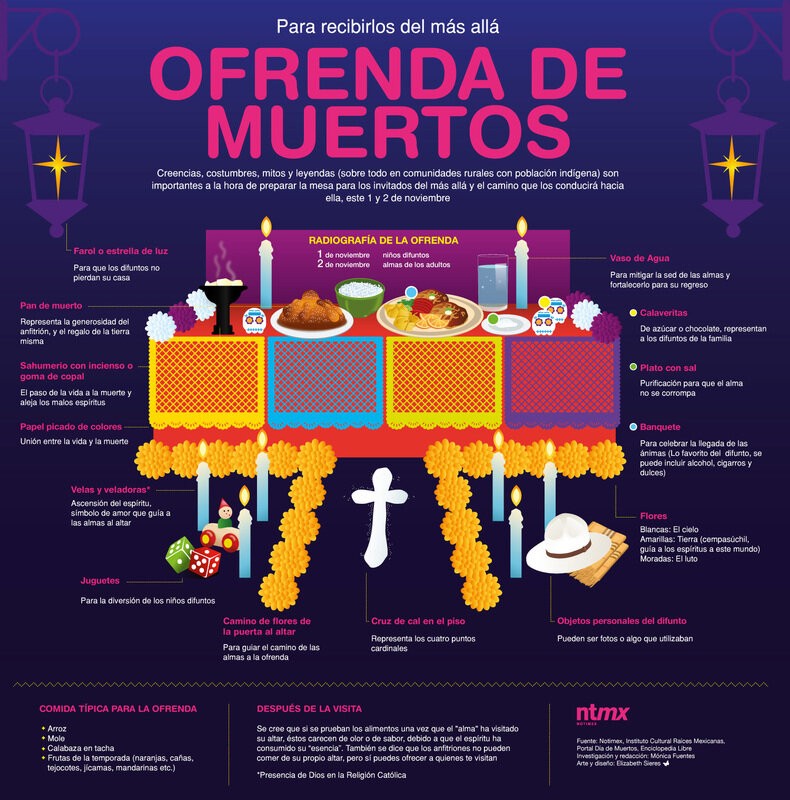 Three-level altar for Día de los Muertos
Three-level altar for Día de los Muertos Calavera de Azúcar with floral designs
Calavera de Azúcar with floral designs Pan de Muerto with intricate decorations
Pan de Muerto with intricate decorations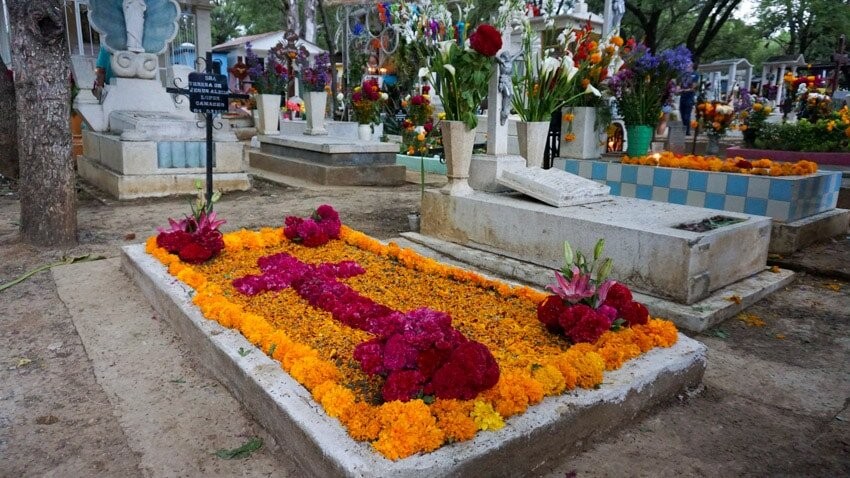 Elaborate tapete de arena for Día de los Muertos
Elaborate tapete de arena for Día de los Muertos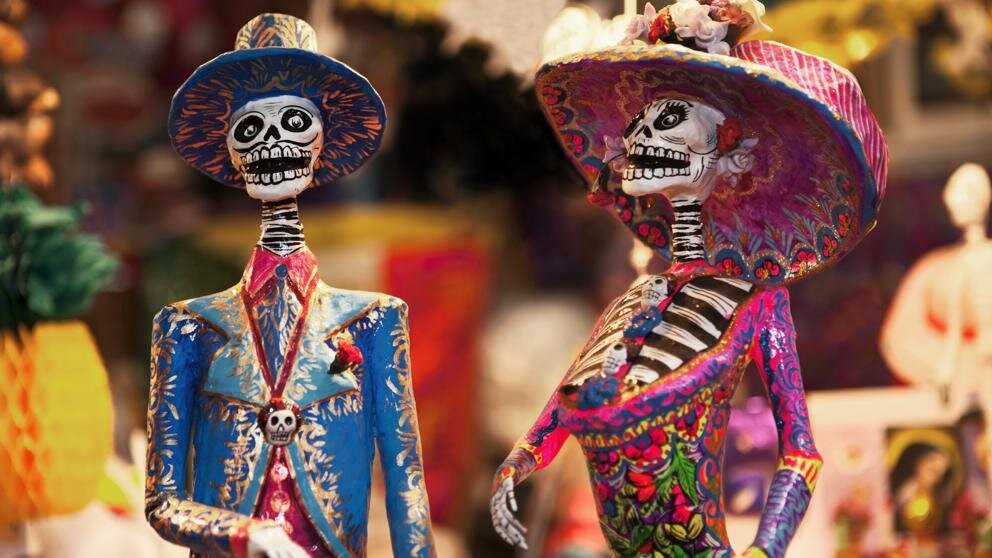 Calaca figure with festive attire
Calaca figure with festive attire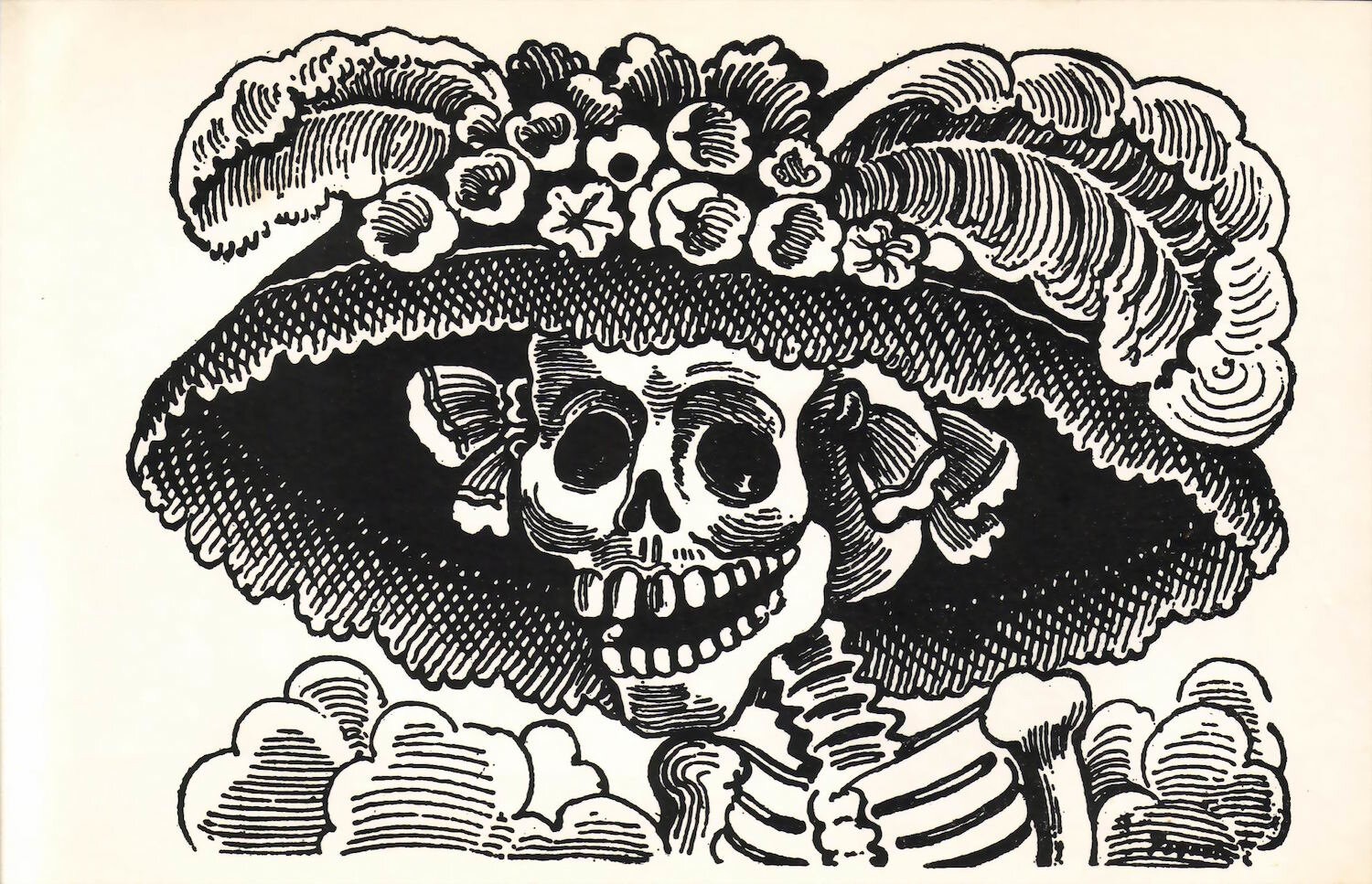 La Catrina illustration with elegant dress
La Catrina illustration with elegant dress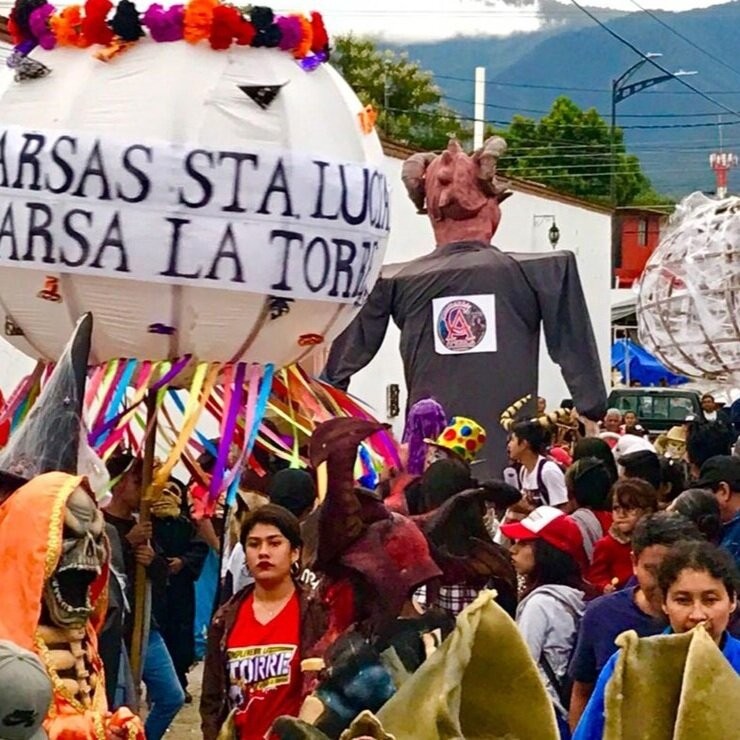 Comparsa participants in vibrant costumes
Comparsa participants in vibrant costumes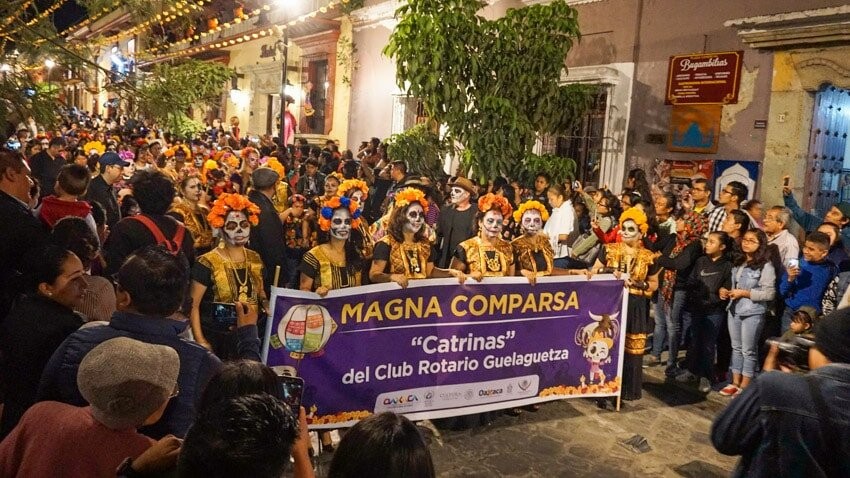 Día de los Muertos parade in Oaxaca with creative costumes
Día de los Muertos parade in Oaxaca with creative costumes Monarch butterflies migrating for Día de los Muertos
Monarch butterflies migrating for Día de los Muertos
 People observing monarch butterflies during Día de los Muertos
People observing monarch butterflies during Día de los Muertos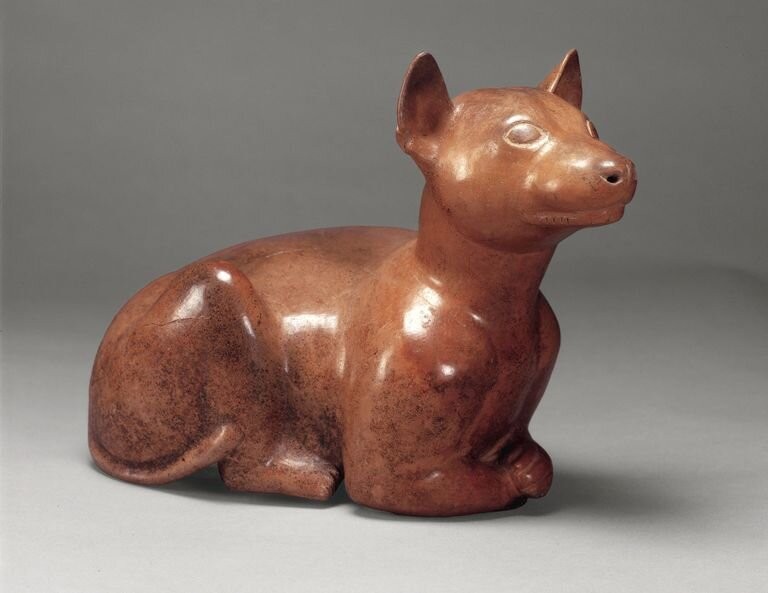 Xoloitzcuintli dog, believed to guide spirits
Xoloitzcuintli dog, believed to guide spirits Xoloitzcuintli ceramic figurine for Día de los Muertos
Xoloitzcuintli ceramic figurine for Día de los Muertos



